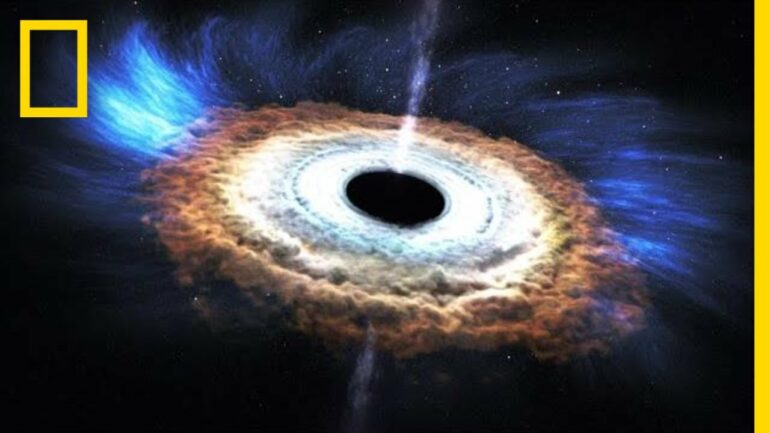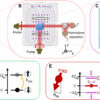Physicists consider black holes one of the most mysterious objects that exist. Ironically, they’re also considered one of the simplest. For years, physicists like me have been looking to prove that black holes are more complex than they seem. And a newly approved European space mission called LISA will help us with this hunt.
Research from the 1970s suggests that you can comprehensively describe a black hole using only three physical attributes – their mass, charge and spin. All the other properties of these massive dying stars, like their detailed composition, density and temperature profiles, disappear as they transform into a black hole. That is how simple they are.
The idea that black holes have only three attributes is called the “no-hair” theorem, implying that they don’t have any “hairy” details that make them complicated.
Black holes are massive, mysterious astronomical objects.
Hairy black holes?
For decades, researchers in the astrophysics community have exploited loopholes or work-arounds within the no-hair theorem’s assumptions to come up with potential hairy black hole scenarios. A hairy black hole has a physical property that scientists can measure – in principle – that’s beyond its mass, charge or spin. This property has to be a permanent part of its structure.
About a decade ago, Stefanos Aretakis, a physicist currently at the University of Toronto, showed mathematically that a black hole containing the maximum charge it could hold – called an extremal charged black hole – would develop “hair” at its horizon. A black hole’s horizon is the boundary where anything that crosses it, even light, can’t escape.
Aretakis’ analysis was more of a thought experiment using a highly simplified physical scenario, so it’s not something scientists expect to observe astrophysically. But supercharged black holes might not be the only kind that could have hair.
Since astrophysical objects such as stars and planets are known to spin, scientists expect that black holes would spin as well, based on how they form. Astronomical evidence has shown that black holes do have spin, though researchers don’t know what the typical spin value is for an astrophysical black hole.
Using computer simulations, my team has recently discovered similar types of hair in black holes that are spinning at the maximum rate. This hair has to do with the rate of change, or the gradient, of space-time’s curvature at the horizon. We also discovered that a black hole wouldn’t actually have to be maximally spinning to have hair, which is significant because these maximally spinning black holes probably don’t form in nature.
Detecting and measuring hair
My team wanted to develop a way to potentially measure this hair – a new fixed property that might characterize a black hole beyond its mass, spin and charge. We started looking into how such…



